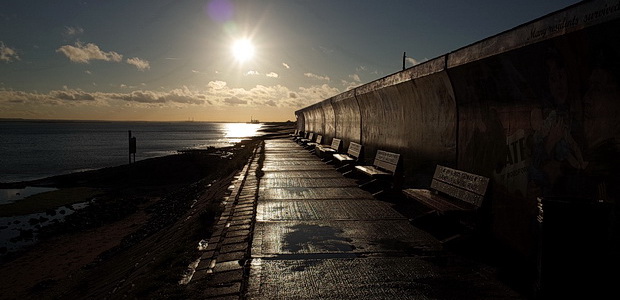
On the weekend, I took a trip out to Canvey Island, a reclaimed island in the Thames estuary in the south-east of England.
I was there to watch the mighty Dulwich Hamlet FC triumph over the local team.
It rained for the entire match but happily the sun broke through after the final whistle, so I went off for a wander around the coast.
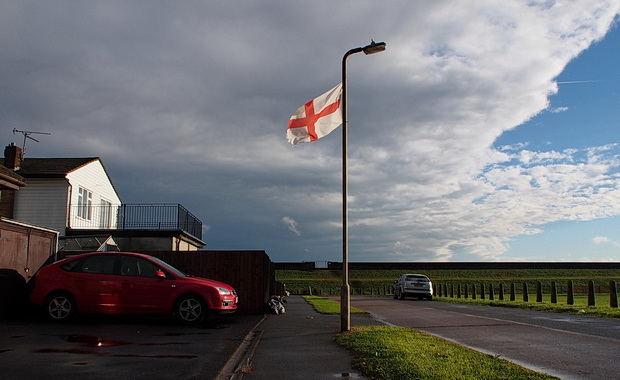
The island was mainly agricultural land until the 20th century, before becoming the fastest growing seaside resort in Britain between 1911 and 1951 [Wikipedia].
The North Sea flood of 1953 wreaked devastation on the island, with 58 islanders losing their lives and 13,000 residents being temporarily evacuated.
The area is now protected by modern sea defences comprising 2 miles (3.2 km) of concrete sea walls.
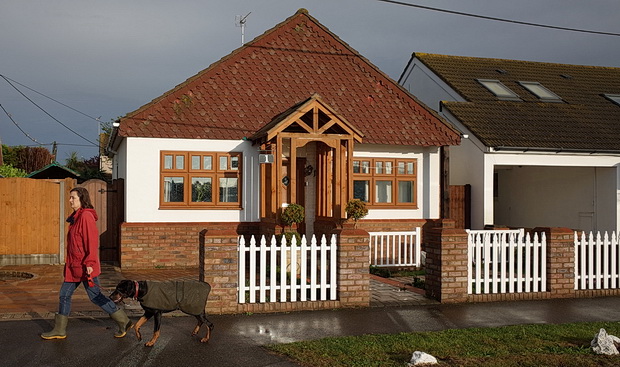
Walking the dog, Canvey Island.
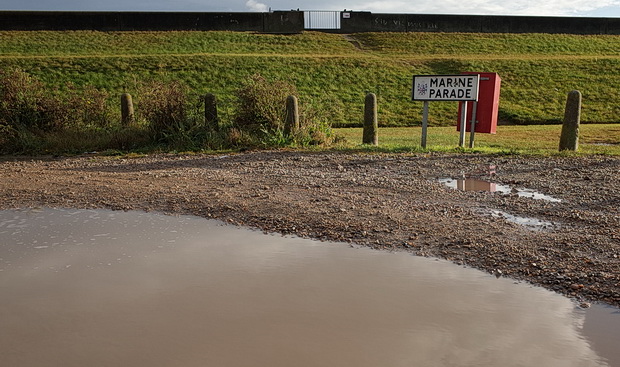
Walking up to the sea wall.
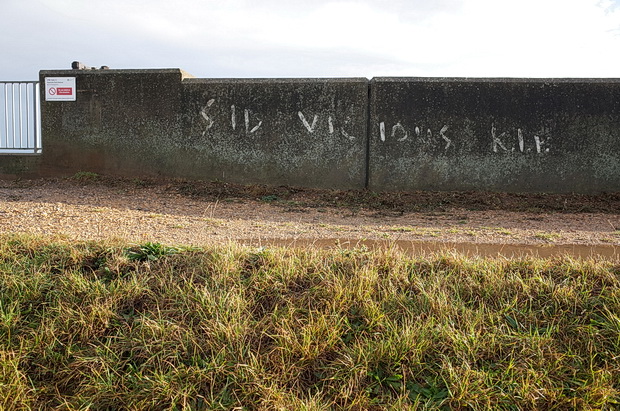
‘Sid Vicious RIP’ painted on the sea wall.
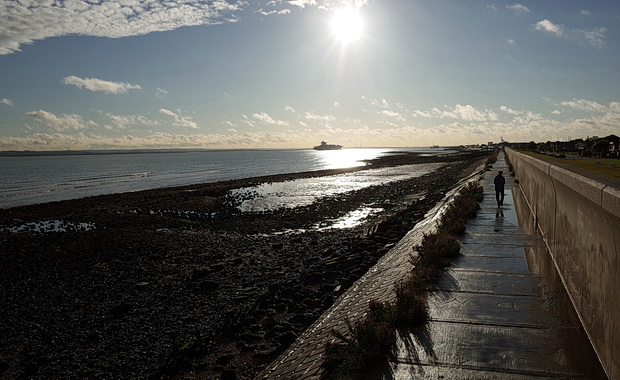
Walking along the sea wall.
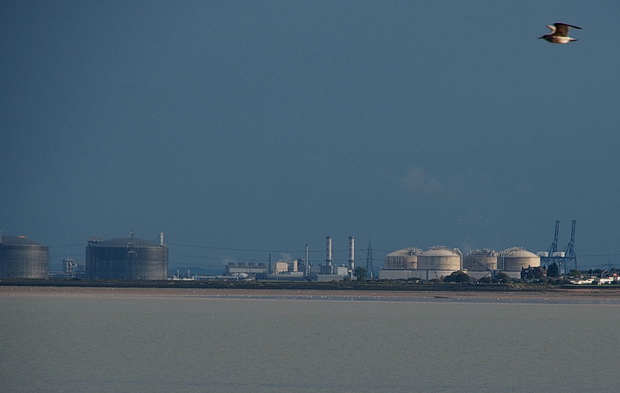
Canvey Island is probably best known for two things: its petrochemical industry, which has been operating since the 1930s, and the truly wonderful pub rockers Dr Feelgood.
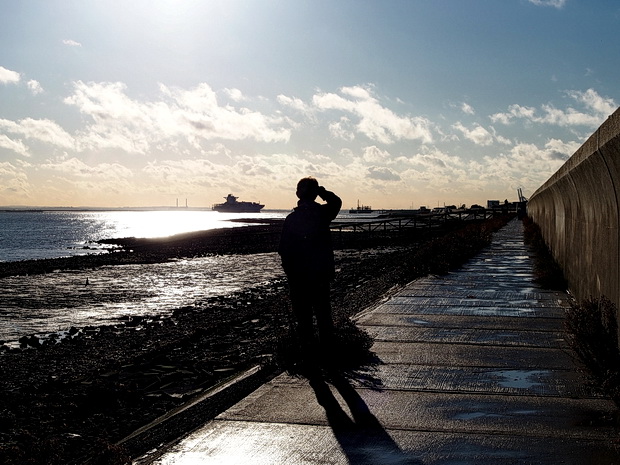
Watching the ships.
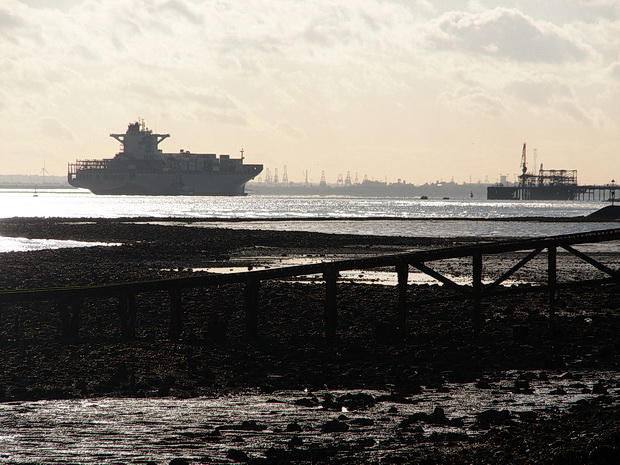
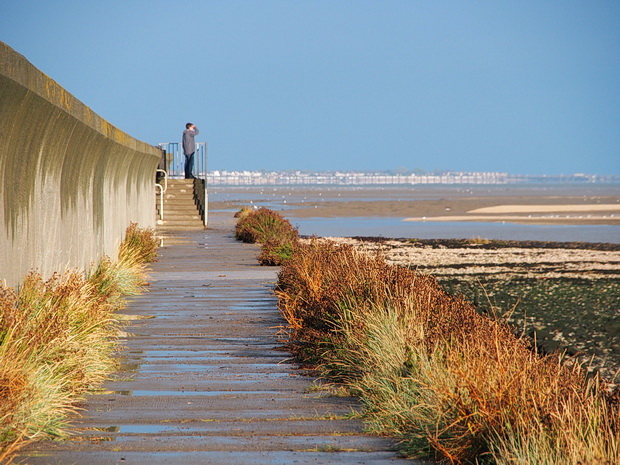
In the distance can be seen Westcliff-On-Sea and Southend.
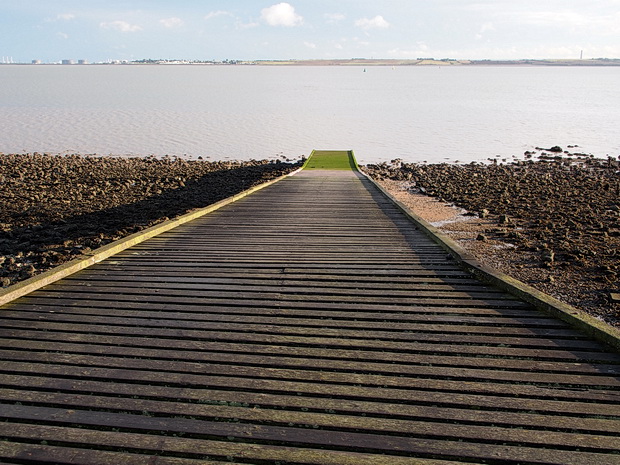
Down by the jetty.
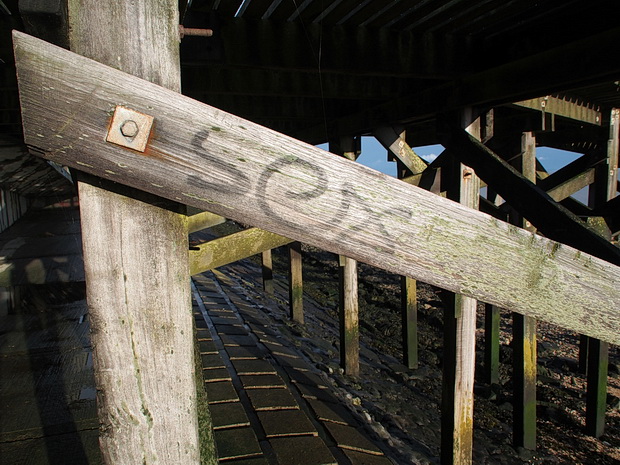
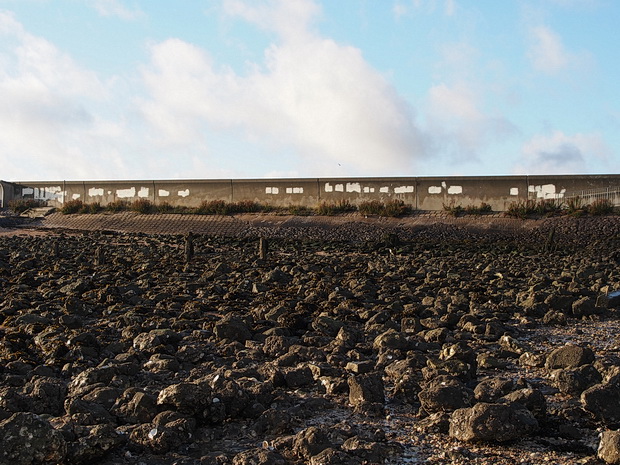
Painted over graffiti.
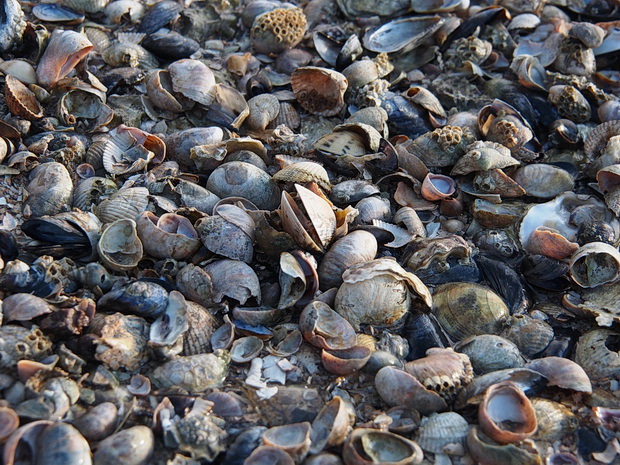
Sea shells.
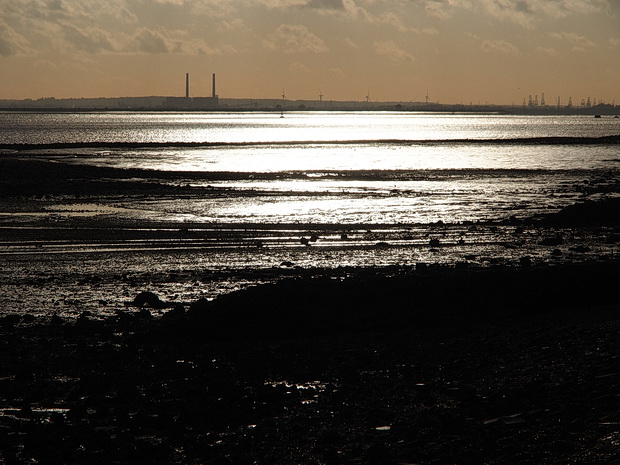
Wind turbines, chimneys and dock cranes in the distance.
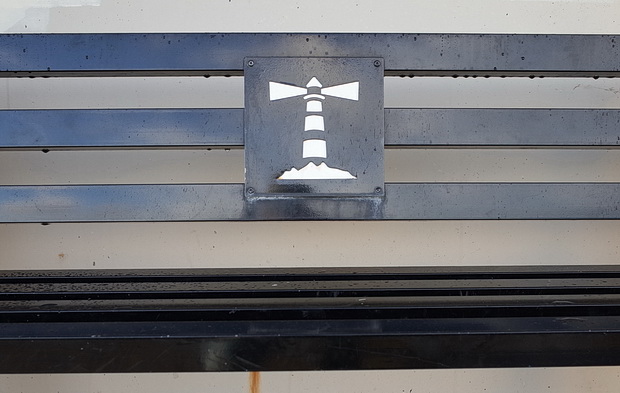
Bench detail.
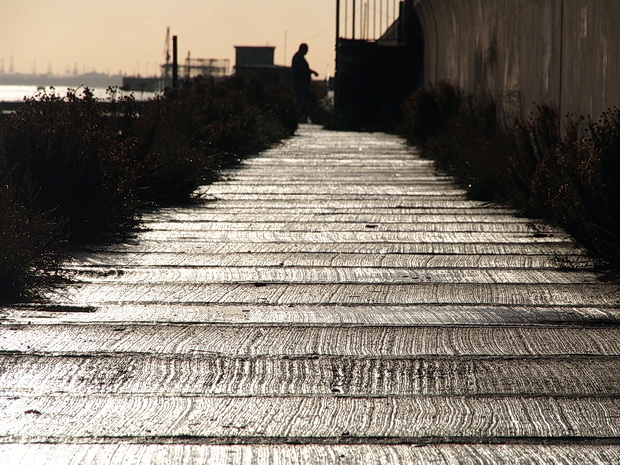
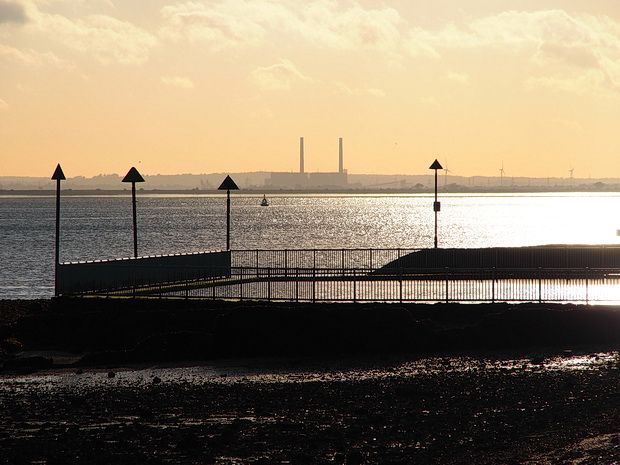
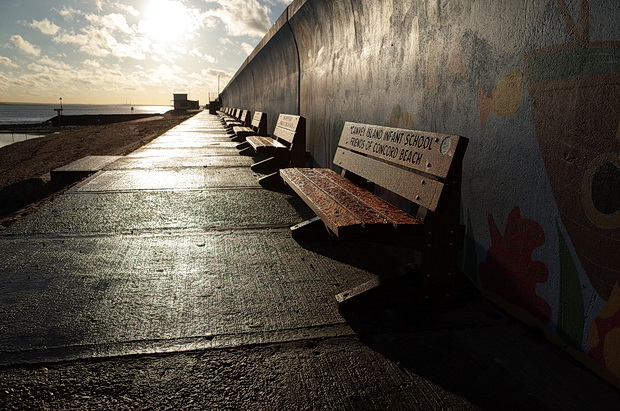
Shiny new benches line the sea wall by Concord Beach, each with its own message.
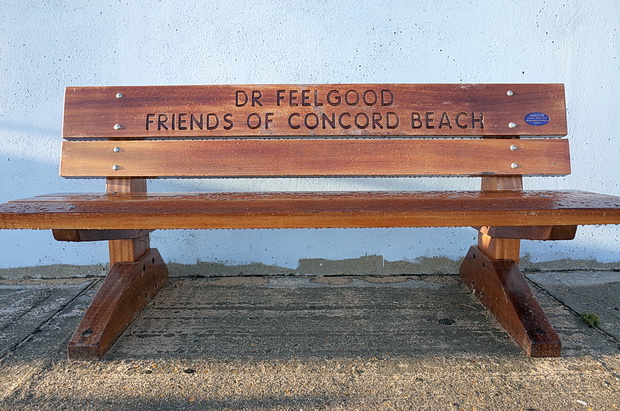
Dr Feelgood bench. I like!
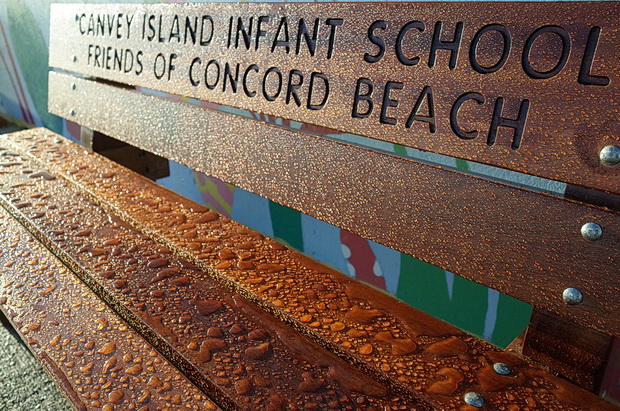
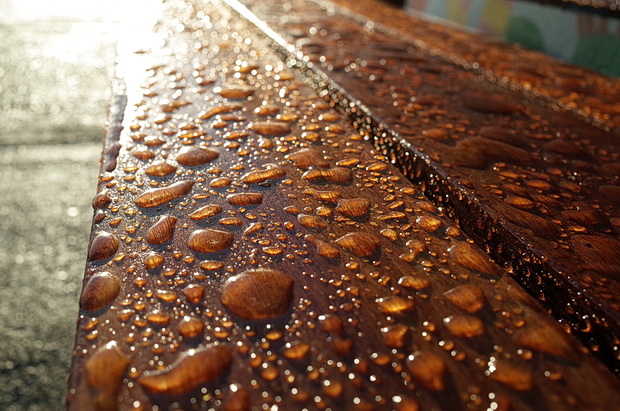
Rain drops on the newly varnished benches.
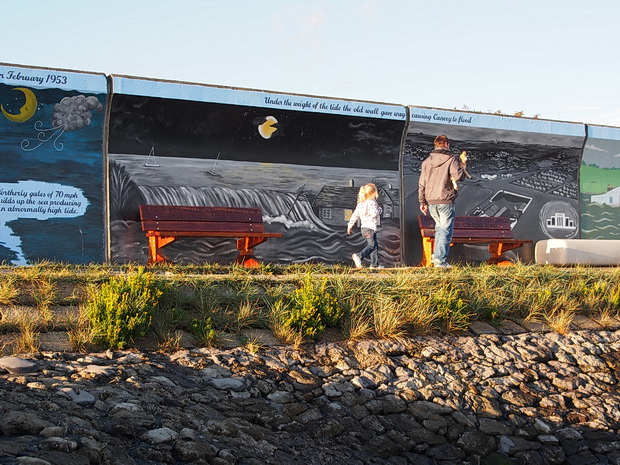
Made possible with a £10,000 grant from the Heritage Lottery Fund, a series of attractive murals painted by professional artists and Canvey locals can be seen on the sea wall of Concord Beach.
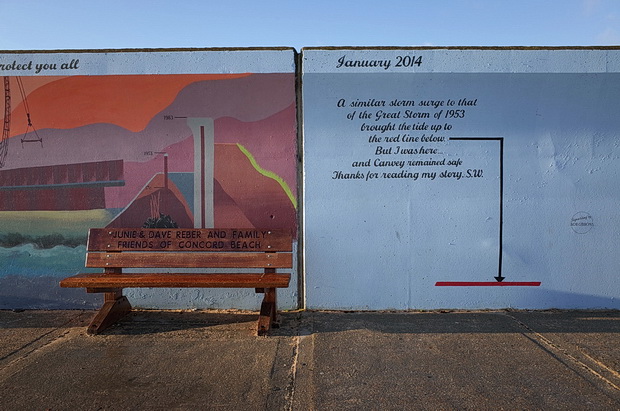
The sea wall murals focus on telling the story of the deadly 1953 floods, and the subsequent building of the sea wall.
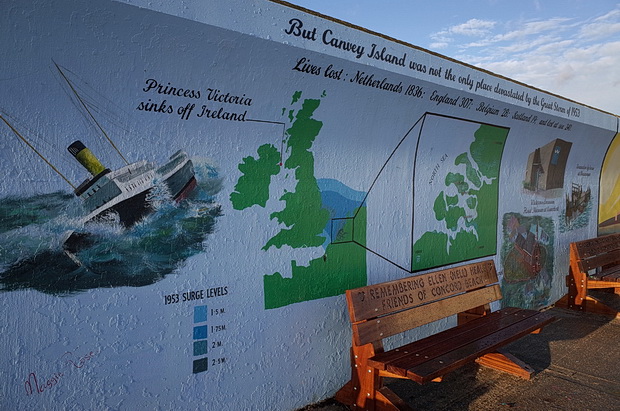
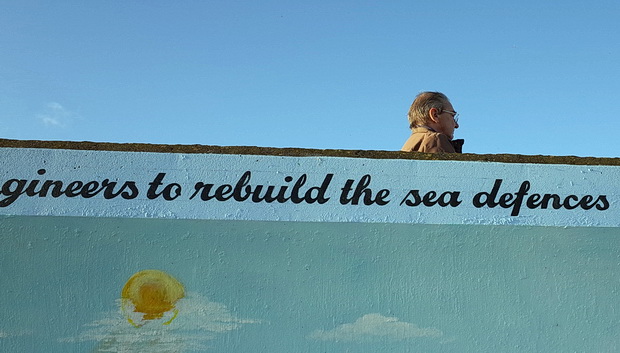
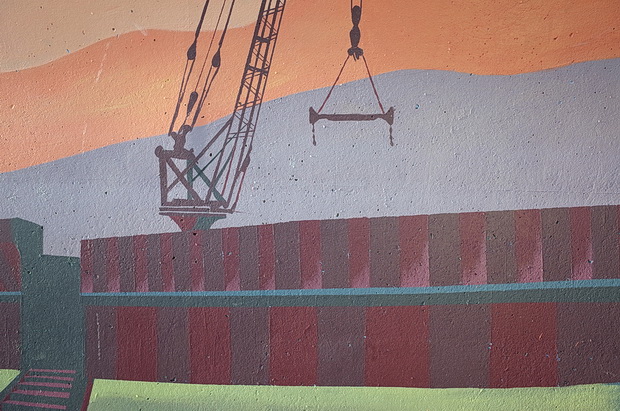
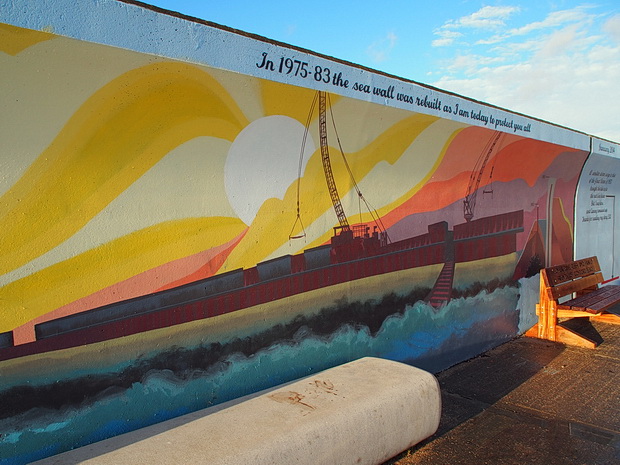
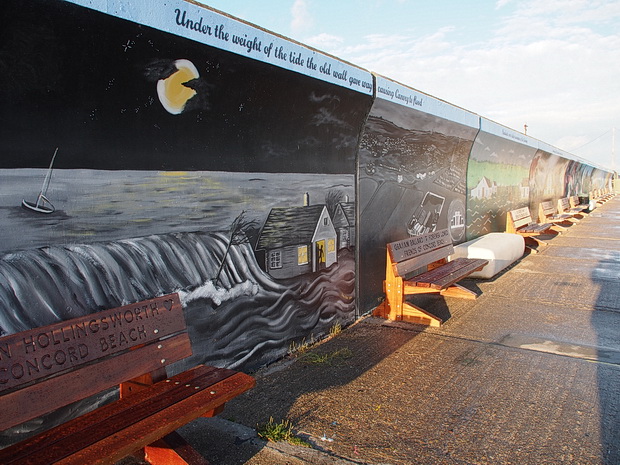
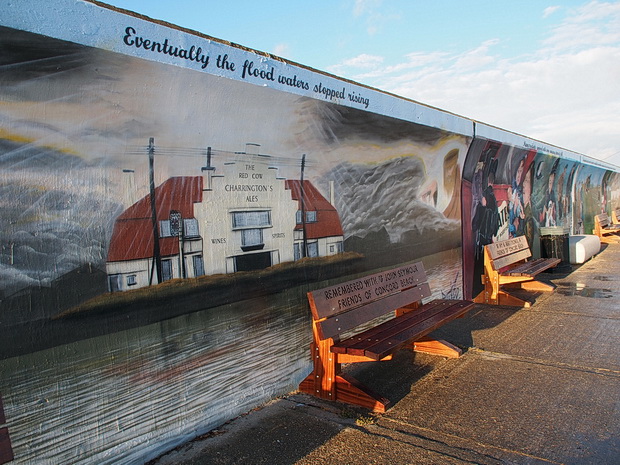
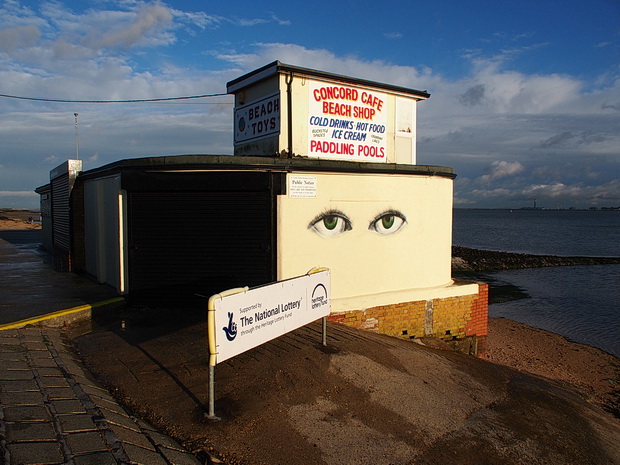
Concord Cafe beach shop was closed, but the eyes were open.
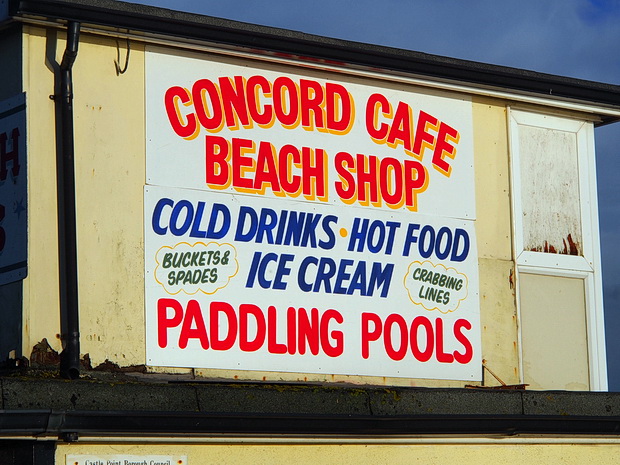
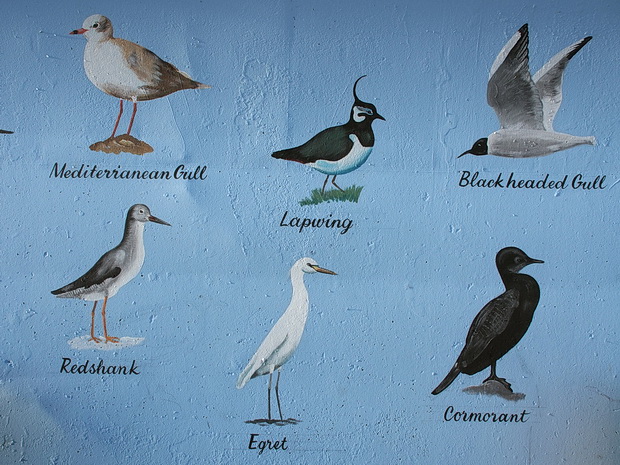
I loved these paintings of the birds that can be seen around the coast.
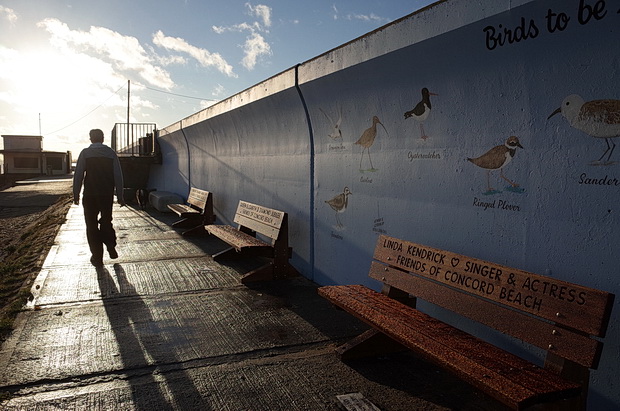
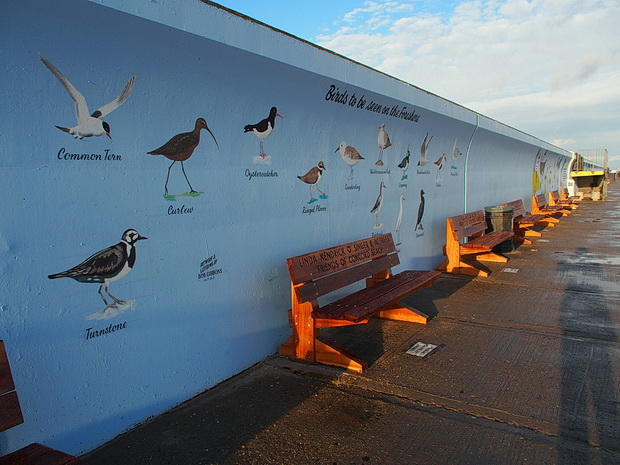
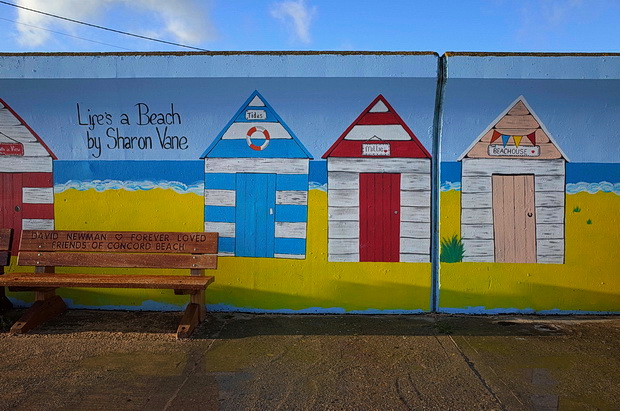
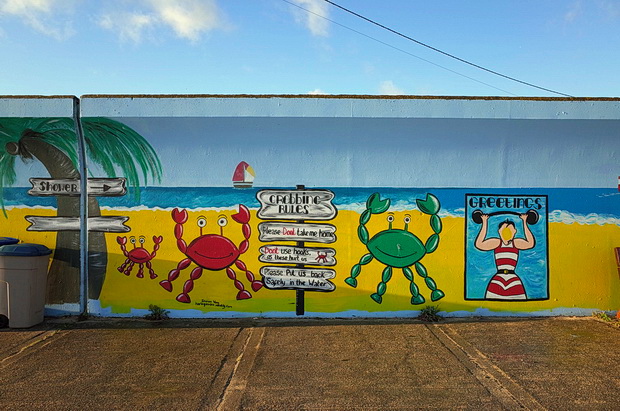
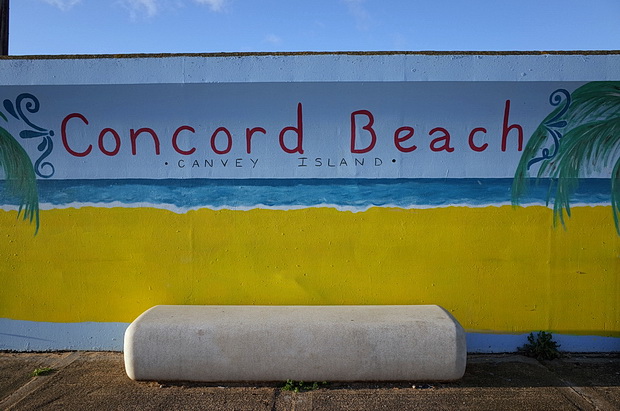
During the Victorian era Canvey was a very fashionable place to visit, with its air supposedly containing healing properties.
A sea front was developed in the 1930s, packing in amusements, a cinema, the Labworth Cafe, and nightclubs such as the Goldmine and Monico were also built, but the trend for cheap foreign package holidays killed off the resort in the 1970s.
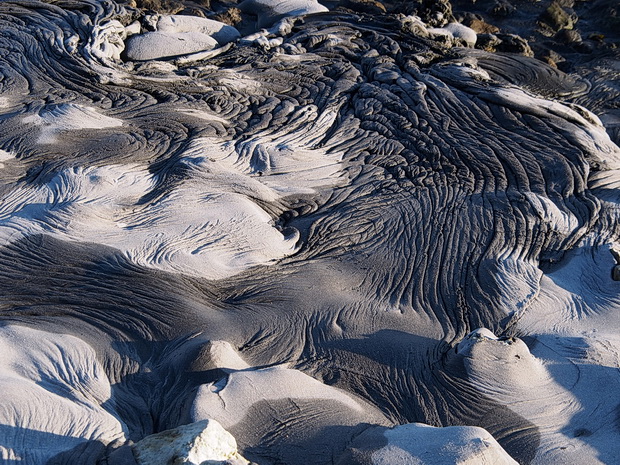
Bitumen on the sea front.
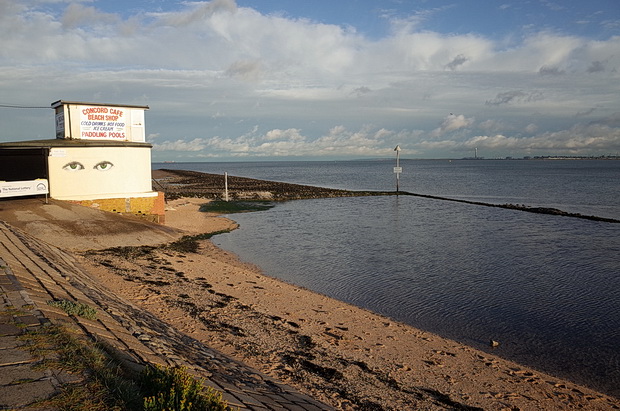
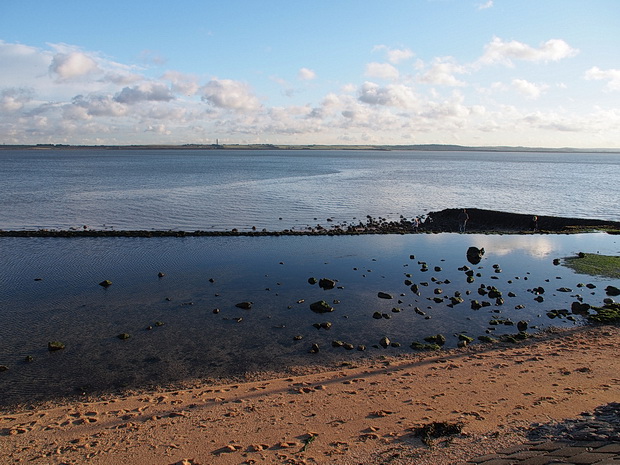
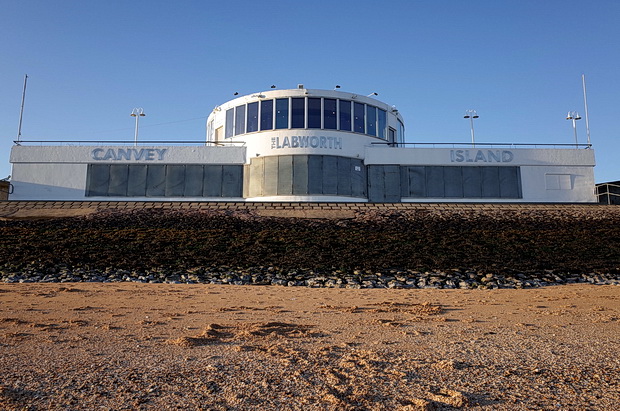
A pioneering modernist International style reinforced concrete building on Labworth beach, the Labworth Café was built in 1932–1933 by the distinguished engineer, Ove Aru.
The building was designed to to resemble the bridge of the Queen Mary ship.
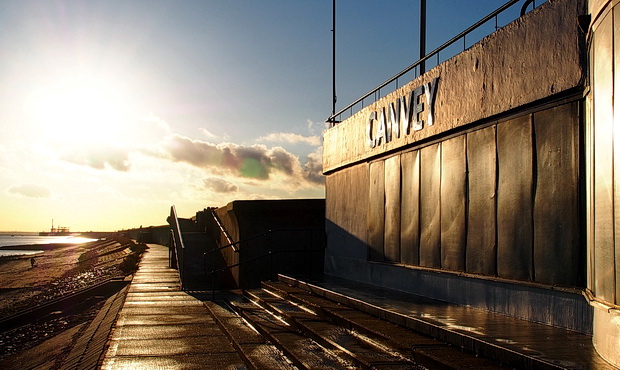
The building fell into a state of disrepair in the 1970s and 1980s but was renovated in 1996 and now functions as both a beach bistro and restaurant.
The ground floor was shuttered up when I went past, but the restaurant was open.
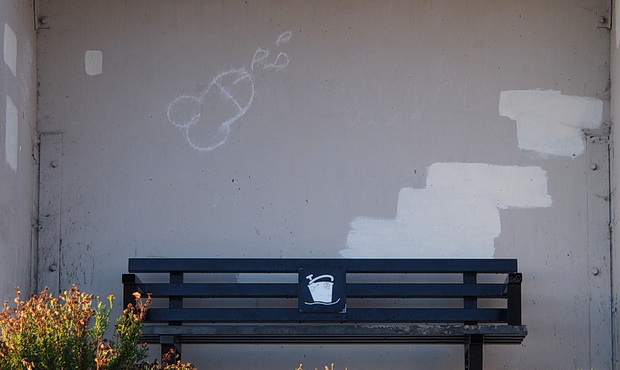
A series of shelters with benches are located along the promenade. Some contain curious graffiti, along with the traditional penis drawing.
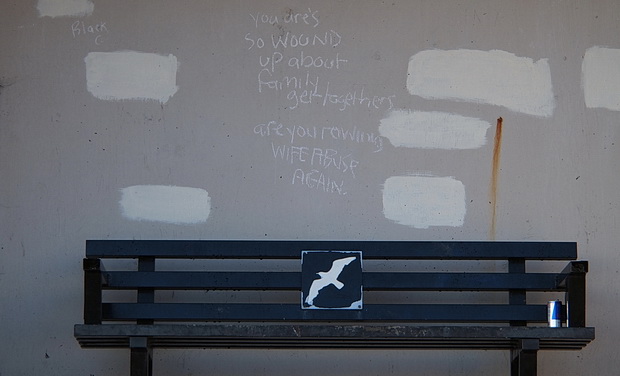
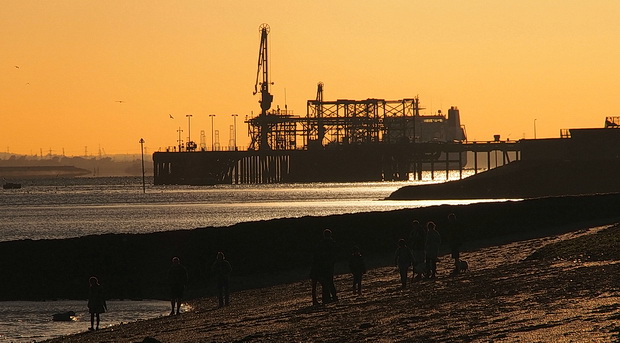
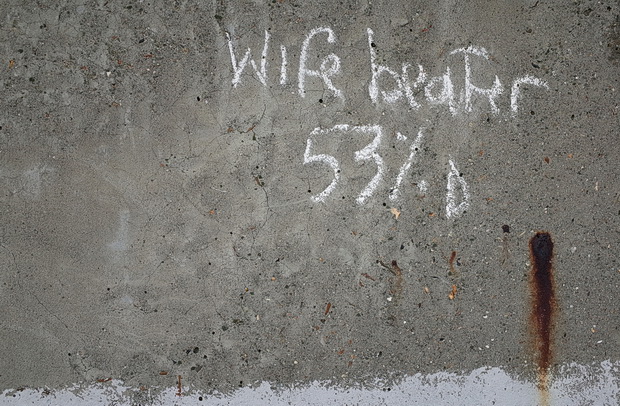
After the murals ran out, the messages on the sea wall got rather darker.
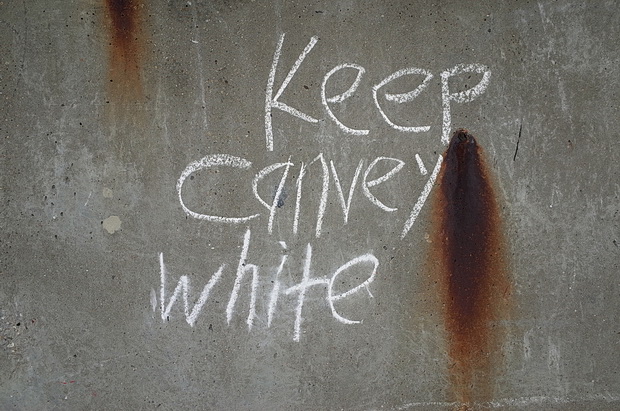
Sad to see this kind of moronic racism still appearing in 2014.
Canvey Island is what Greg Dyke might have described as “hideously white” with the island registering a high proportion of white people compared to national figures,
In the 2001 census, the ethnicity recorded was 98.2% white (compared with 91% for England), 0.6% of the population of Canvey were of a mixed ethnic group, while 0.6% were Asian, 0.2% Black, and 0.2% Chinese. [—]

Some more weird chalked-on graffiti.
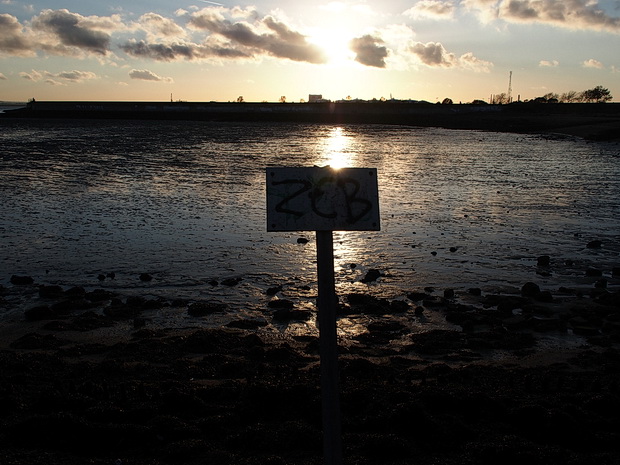
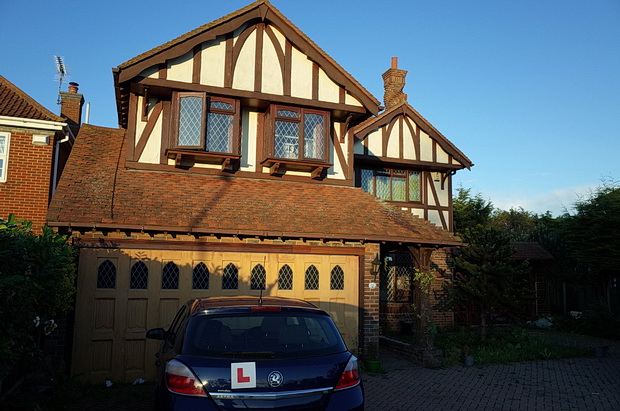
Heading back inland towards the bus stop, I passed this classic Essex half-timbered new build home.
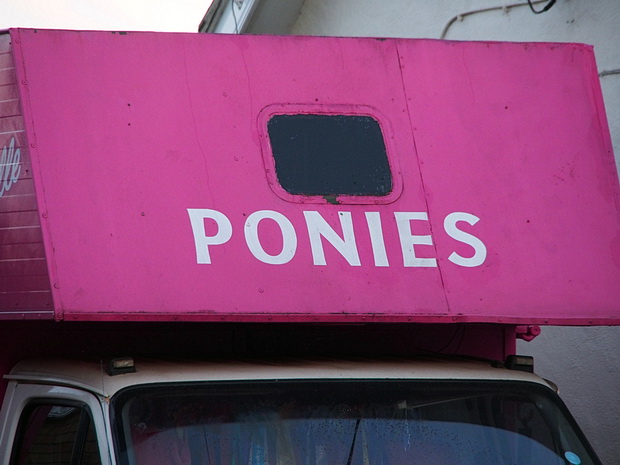
A pink pony truck!
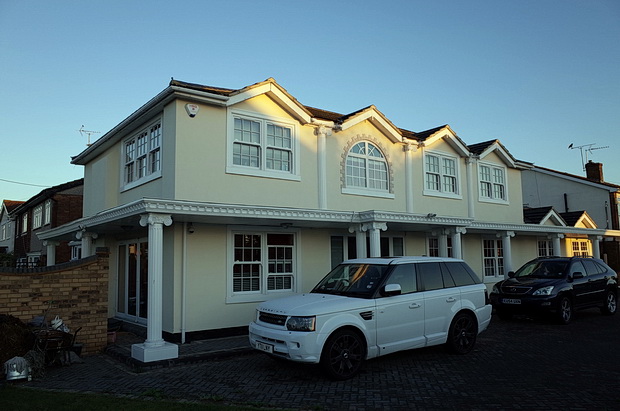
This place – with its tacky ionic columns and jumbled architecture – has to be owned by a builder!

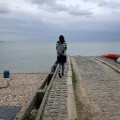
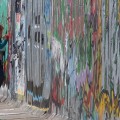
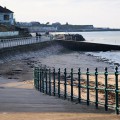
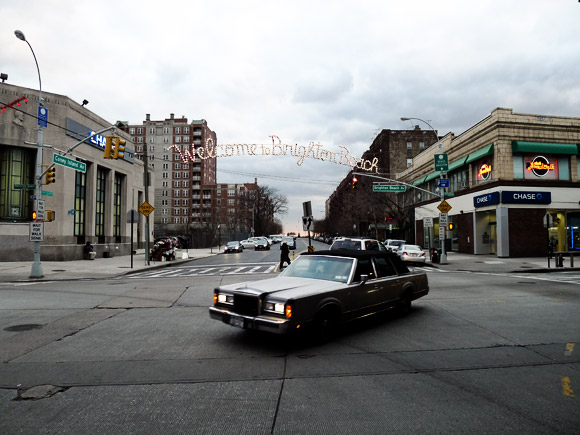
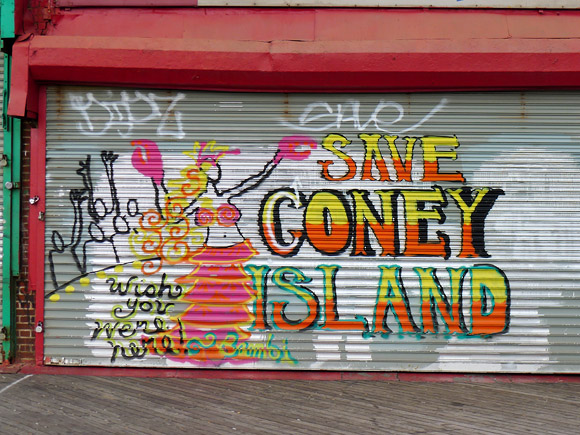
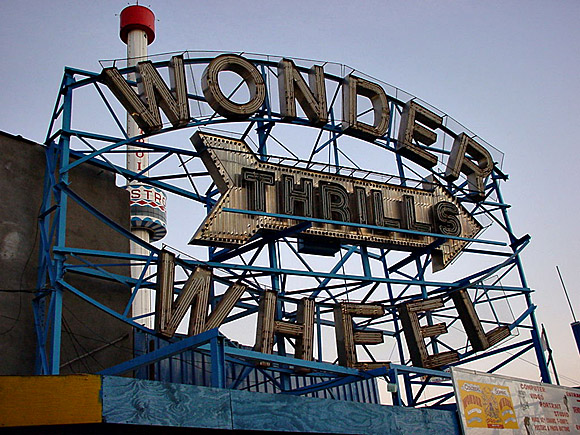
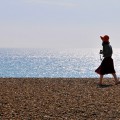
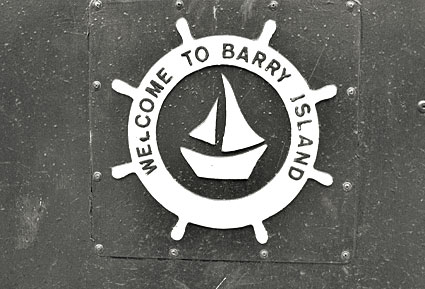



Could this guy have taken any WORSE photographs of Canvey Island? obviously not a fan:-)
They look great to me. Really good. Perhaps you could post up a link to your photos?